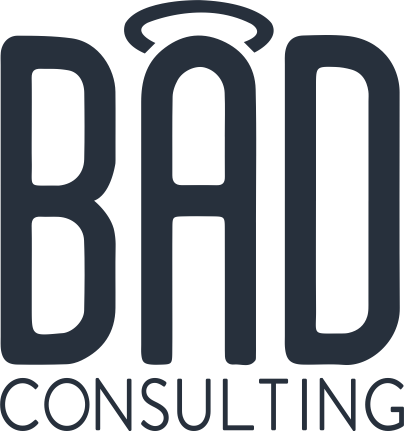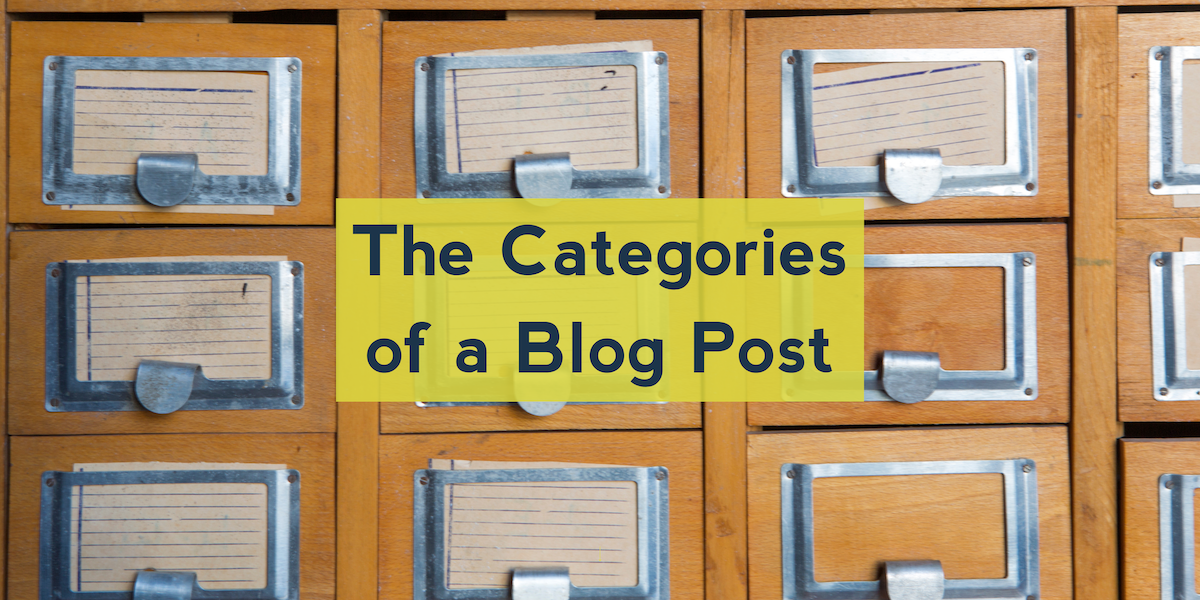Since I announced I will be offering more writing services, I thought it might be time to add in a writing tactics category. I just want to make sure this blog fits closely with what I’m actually doing, and going back and forth between social media and writing on Tuesdays seemed like the right call for now.
So with that out of the way… something I get asked about a lot is how I can write so much so fast and so consistently. Some of it I can’t pass on. It’s natural for me to write like this. When I restarted this blog back in May, it wasn’t even hard to post every day. I just had that much to say, and almost four months later, nothing has changed.
But some of it I can share and that’s what we’re going to dig into today. Let’s get started with categories.
What are categories?
If you look at this particular blog post, you will see a “WRITING TACTICS” listed between the image and the title. And if you happened to click on it, it will take you to a listing for just this blog post. Super boring, but if you click on the other categories for my other blog posts, it will take you to any blog post that is categorized under that particular word. In some cases, that is a whole lot content.
You will sometimes hear categories referred to as content pillars. In fact, if you’ve ever heard me speak, I talk about content pillars for both social media and websites. But for SEO purposes (and on WordPress), it’s called “categories.”
What purpose do they serve? They give an overarching topics for your blog, whereas the blog post itself is more specific within that topic. So the category is a skill you want to be known for and then the blog post would demonstrate your knowledge within that skill.
How do you pick your categories?
There is a whole lot of research you can do, and I have done that research over the years, both for myself and for clients. I can draft a perfect content calendar based off all that research and that includes what categories should be on your website, which is a process that is bigger than this blog post can handle.
I didn’t happen to do that for this site, because content planning isn’t all about the science. There is some art in there as well.
In this case, I was looking at categories that would motivate me to write. That was important because I didn’t want this blog to die like so many blogs do. So in addition to writing for my audiences, I made sure I included categories that I like to write about.
My categories and why I picked them
- Running a business: One of my biggest sources of income comes from other people who are running their business solo. So for that reason, I have this category. The goal is to give a look at how I do things and create relationships with those who are new to running their solo business as well as those who have been doing it for awhile.
- Social media/writing tactics: So many times I get clients from people who have tried to do it all and slowly came to realize something needed to give. And that something is so often social media. So this is all about some basic tips and news that will help anyone in this particular audience.
- Social media and mental health: I would call this my bread and butter category. I am known for this in my community and I have written pieces in the past that seem to have made a difference. If I’m writing a blog, this category needs to be here. But it also attracts those solo social media consultants who will possibly give me business. So even though this category is more about who I am as a person, it does support my business.
- Social media client: I have had a history of working with people who don’t know how to be a social media client. That may seem strange, and yes, it absolutely is. But I know that audience exists and they like to work with me. It seemed right to write some content for them.
- Reading: This is content for me. I read an extreme amount and it’s a big part of the reason why I’m good at writing. I have people who look for recommendations from me, and I just needed a place to write down my thoughts about books. GoodReads just didn’t cut it for me. Although I still find it funny that my most-read review was simply, “I’m too old for this.” I was totally too old for that book. But I do read some goodies, including some important social media articles, so it felt natural to share.
This is what basically works for me based on my audience needs and what I enjoy writing. I have had to experiment. But as I experimented, it was clear what I would actually write and what day each category should be on.
What do I do with the categories?
This is what works for me. It may not work for you. But…
Each weekday has a category assigned to it, which means I’m never starting from scratch with what I’m writing about that day. Do you know how helpful it is to not stare at a blank page every day when I’m trying to decide what to write? SO HELPFUL. It takes a little bit of that mental load off so I can focus more on the writing.
But sometimes that’s not enough to get me writing.
For the days I’m still staring at a blank page even though I have that day’s category in front of me, I depend on AI. I search some variety of “blog topics on <CATEGORY>.” I’m sometimes more specific, because I have something in mind but haven’t quite grasped what it should be quite yet. Do I generally take what AI gives me blindly? No. In fact, most times I choose to write on something completely different than the topics AI lists out. It’s more like a little push to get me over the bump of not knowing what to write.
And with all of these pushes lined up, it’s actually pretty easy to write every day. So much of writing is figuring out what to write about. Once you have a formula to get you through that, you can get ‘er done.

